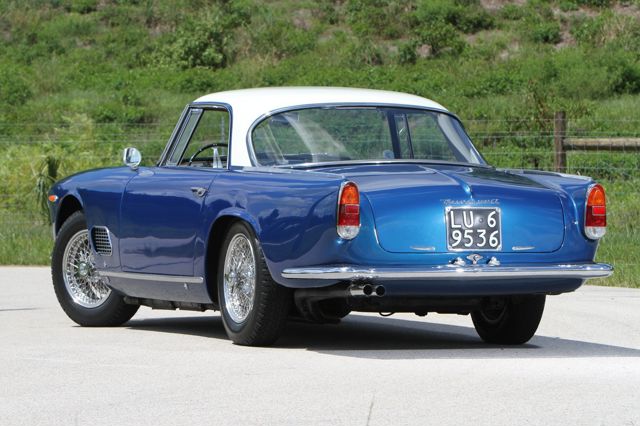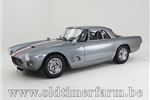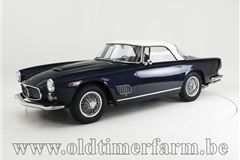Maserati 3500GT and Spyder (1957 – 1964) Review
Maserati 3500GT and Spyder (1957 – 1964) At A Glance
When the Maserati 3500GT hit the market in 1957, Ferrari found itself fighting with a fearsome foe that was based locally, for honours in the supercar market. The car signalled Maserati’s move into Ferrari’s patch, producing some of the world’s most desirable sports cars.
The 3500GT was a successor to the A6G/2000, but it represented the transformation of Maserati from racing car manufacturer to fully-fledged road car builder. The new, immensely stylish car ushered in higher levels of production, although only 2223 examples of the 3500GT coupé and convertible Spider version were built in seven years – in specialist car manufacturing terms, this was a serious number of cars in a short space of time.
Although much of the 3500GT was completely new, elements were carried over from Maserati’s previous models. The tubular steel chassis was based on the A6G, with coil spring independent front suspension and a live rear axle on semi-elliptic springs. The straight-six engine, substantially more powerful than the A6G’s, was distantly related to the one that powered the 250F Grand Prix cars as well as the 300S and 350S sports racers. The twin overhead camshaft was reworked by Chief engineer Guilio Alfieri to make it road car tractable, using three Weber carburettors and two spark plugs per cylinder. To the untrained eye, it looked like a straight 12-cylinder engine, due to 12 plugs fitted where usually there would be just six. The results were impressive, and it produced 220bhp.
The bodies were pretty special with the majority of the attractive coupé shells being produced by Touring using aluminium panels and Superleggera principles, but Bertone, Allemano and Frua also produced their own striking styles, while Moretti and Boneschi built one-offs. The company continuously developed the 3500GT during its life and 1959 saw front disc brakes introduced – but the most noteworthy issue was the appearance of the Spider convertible. Responsible for the beautiful body design was Giovanni Michelotti, who worked for Vignale. Much of the engineering was the same as the fixed head models, but the Vignale-built bodies were substantially different to the Touring coupés, and were made out of steel.
1961 saw the next major changes to the 3500GT formula. In response to the Jaguar E-type – which worried the Italian supercar manufacturers – Maserati fitted Lucas fuel injection to create the 3500GTI, thus creating the first Italian production car to feature an injection system. Ironically enough, it was the same system as used by many Jaguar racing cars. It proved troublesome, but when working properly, power was lifted by 15bhp and top speed also went up significantly. Other changes around this time included the introduction of a five-speed manual transmission, disc brakes all round, a re-routed exhaust system, deletion of the front fog lights and revised indicators and rear lights. The end of production in 1964 had introduced even automatic transmission introduced, reinforcing the GT status of the car.
The 3500GT enhanced the company’s reputation and gave it the confidence and financial ability to start building some real supercars to fight Ferrari with.


.jpg?width=640&height=426&rmode=crop)
.jpg?width=640&height=426&rmode=crop)
.jpg?width=640&height=426&rmode=crop)
.jpg?width=640&height=426&rmode=crop)
.jpg?width=640&height=426&rmode=crop)


 Fabulous Touring styling, race-bred chassis, howling straight-six engine with genuine Grand Prix character
Fabulous Touring styling, race-bred chassis, howling straight-six engine with genuine Grand Prix character
 Delicate and highly strung, best used on very special occasions
Delicate and highly strung, best used on very special occasions


